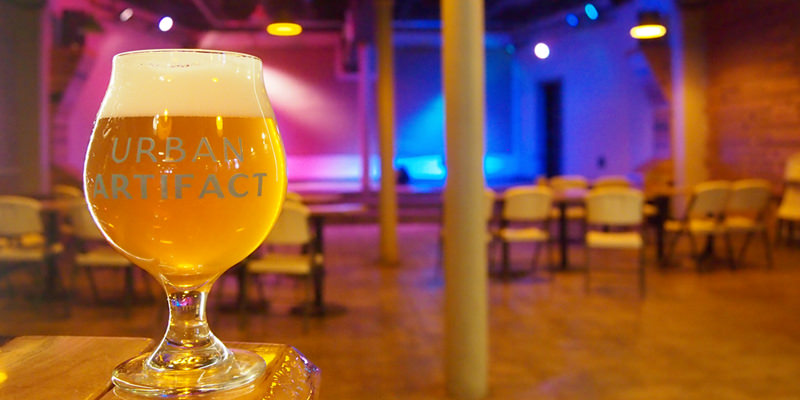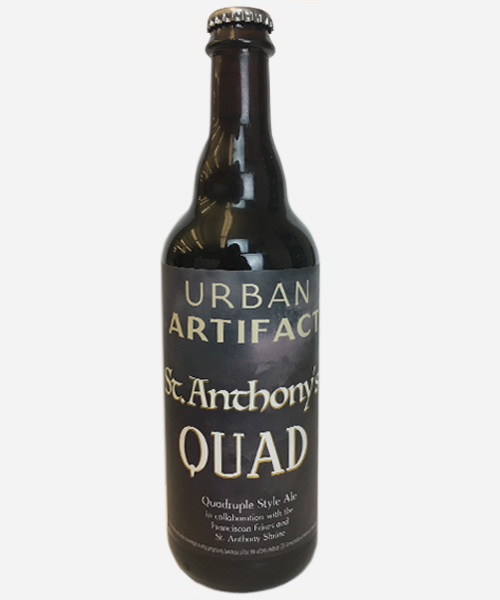

In the summer of 2015, Bret Baker was on a mission. The head of brewing operations at Urban Artifact Beer was determined to catch wild yeast — in Cincinnati. That summer, Baker was at St. Anthony’s Shrine, a Catholic church less than 10 miles outside of downtown Cincinnati with around 20 friars, trying to capture the taste of the place in his beer.
Urban Artifact Beer’s idea for local wild yeast isn’t revolutionary. Brewers and everyday people have been using spontaneous fermentation to make beer since the beginning of civilization. It’s truly the most natural method, but that natural usually takes place in secluded countrysides. Baker, Artifact Beer, and the friars at St. Anthony’s Shrine were looking for something different, though, something worthy of the post-industrial age. Something that tasted like home.
Their answer was wild yeast. Wild yeast exists all around us. It’s on the trees, the grass, and the buildings. It’s also floating in the air, and Urban Artifacts captured the unique yeasts from the Cincinnati air and used them to brew a beer.
To capture the wild yeast, Baker set yeast traps around St. Anthony’s Shrine. A yeast trap is a mason jar filled with wort (the precursor liquid to beer) and covered with cheese cloth. “We let it sit out overnight, and the next day we came and collected our samples,” Baker explained to me over the phone. Then the jar was sealed with a normal mason jar lid and left to ferment for around three months. The wild yeast that both tasted and smelled good was kept, and the rest thrown out.
“Once we were out at St. Anthony’s, we got some really nice mixed cultures to make a Belgian-style quad,” Baker tells me.
Nearly 19 months later, the beer made from that yeast was ready. It’s a quadruple-style ale called St. Anthony’s Quad.

“We usually have better luck when we’re farther away from city proper,” Baker explained. But what happens when the yeast comes from inside city proper? “We get a lot more mold and weird slime bacteria growth and generally flavors that aren’t necessarily good,” Baker says. “Humans are dirty and we leave a lot of trash everywhere and it’s not the best. You’re looking for natural wild yeast and bacteria that create a lot of good flavors.”
That’s not to say that it’s impossible to get good yeast in an urban environment. Urban Artifact brewed a beer using yeast captured at Cincinnati’s Union Terminal as well. Urban environments just require more yeast traps because the percentage of good cultures is lower.
“It’s really great to see the city embracing these wild and funky beers that we specialize in,” Baker says. “People have really been coming around to it.”
Funky is a good word for St. Anthony’s Quad. On the side of the label, it reads, “Wild Cultures. Saccharomyces Cerevisiae and Wild yeast captured and tamed from the St. Anthony Shrine in Cincinnati, Ohio.” On the other side, it notes the red wine oak barrels the beer was aged in for nine months. When I tasted a bottled sample, my first impression was that it sits somewhere between a sour and a Belgian quad. I smelled the influence of the wine barrel aging on the deep red-hued beer right off the bat. It was surprisingly tart in an unripe apricot way, made all the more noticeable by the nearly nonexistent carbonation. A bit of a rubbery taste hides behind the tart, while a subtle toffee sweetness and slightly bitter finish rounded the beer out. It’s a fun beer when you want a taste of something original.
You shouldn’t be surprised to see unique beers coming out of Cincinnati. The city’s brewing culture is heavily influenced by early German immigrants, and it’s once again flush with nearly 40 breweries in the Cincinnati area. In other words, it’s a city ripe for future collaborations, Baker says. Next up, Baker would like to catch wild yeast in the abandoned subway tunnels that were built under Cincinnati in the late 1920s.
People near Cincinnati who are curious about drinking a wild yeast beer can get a taste of the city on Fat Tuesday in the Urban Artifact taproom. It’s labor-intensive and a passion project, so there are only 25 cases of bottled beer and a couple kegs. But you’ll be drinking for good, as a portion of the sales goes back to St. Anthony’s Shrine.
